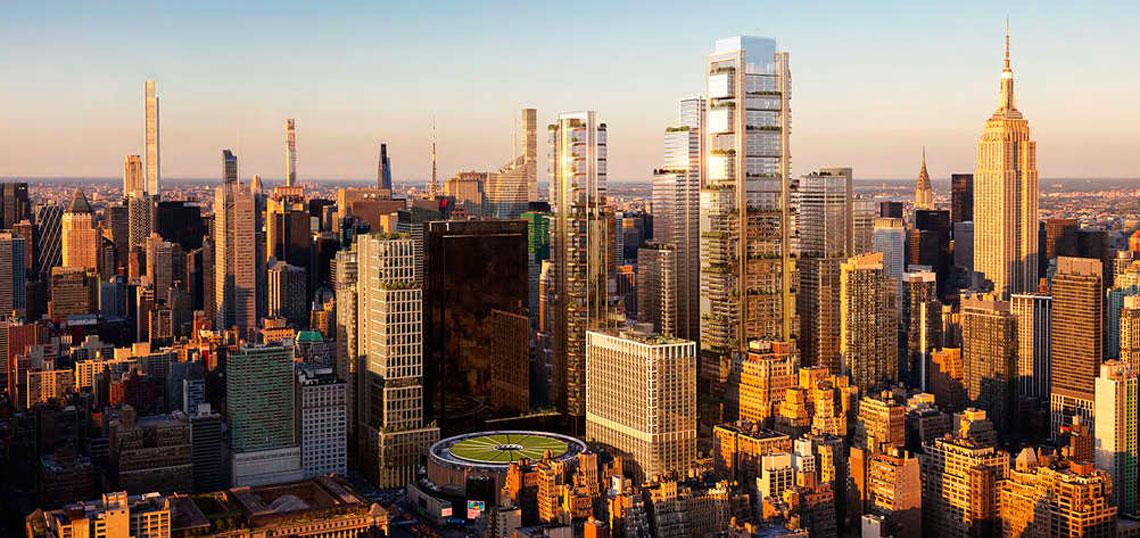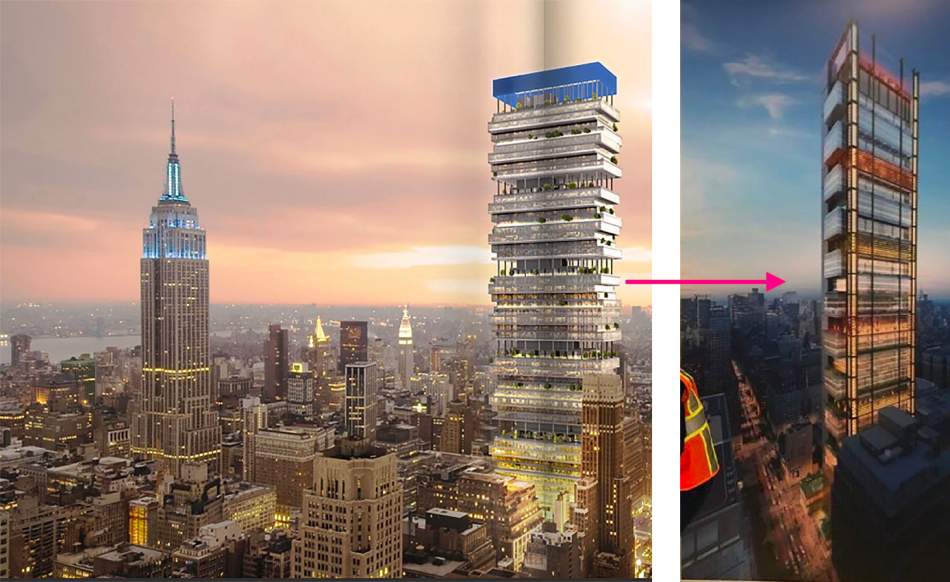As the new PENN District begins to take form, PENN 15 rivals Madonna for its ever-changing appearance as the building (and Vornado Realty Trust, its developer) continues to cycle through a list of top starchitects.
Yet, despite the starchitect, each design is a variation on a theme. The original design by Pelli Clarke Pelli featured multiple levels of slightly different sized floor plate triads cantilevered over large, green spaces.
Then, Rafael Vinoly took a stab at the building evening out the floorplates and bulking up the building a bit while reducing the green spaces.
And now, Foster + Partners has just revealed their rendition which resembles different sized articulated glass containers with 27 landscape outdoor spaces, alternating from the sides to the front and back facades every fourth floor.
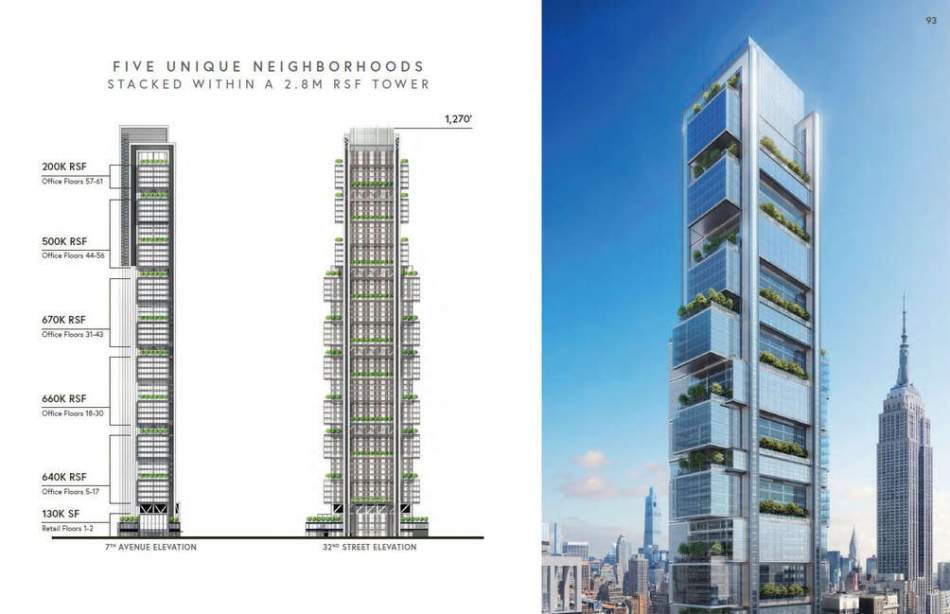 DBOX | Vorando | Foster + Partners
DBOX | Vorando | Foster + Partners
Just after the news that Governor Cuomo wants to rezone commercial Midtown buildings into residential to reduce the oversupply, here come almost 3+M more square feet.
PENN 15 will replace the shuttered 1,700-room Hotel Pennsylvania on Seventh Avenue between West 32nd and 33rd Streets. The tower will fall under the recently adopted Empire State Complex General Project Plan, which will allow ten new sky-scraping towers to rise around Penn Station (with some concessions).
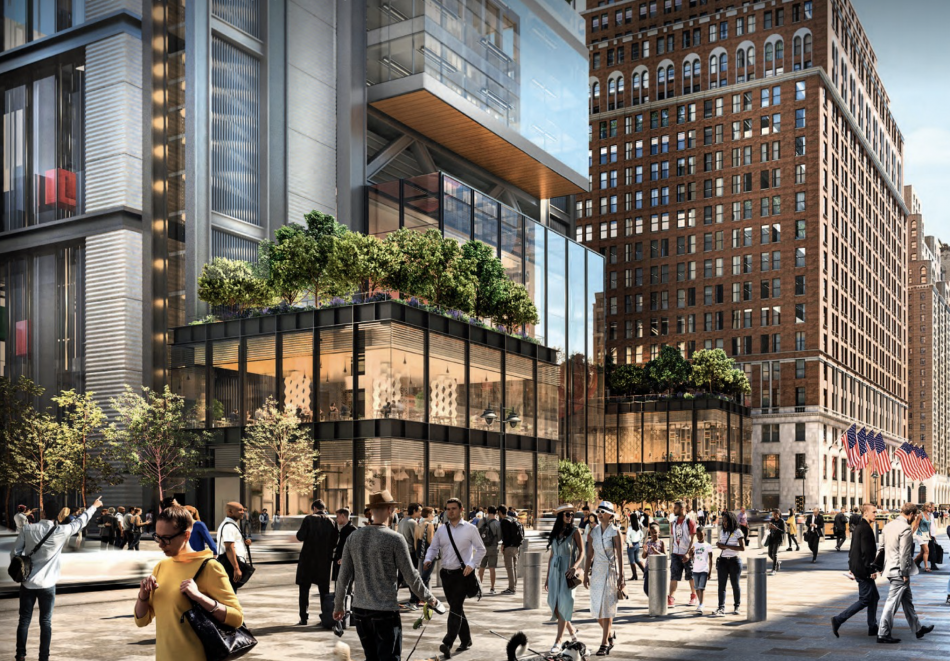 DBOX | Vorando | Foster + Partners
DBOX | Vorando | Foster + Partners
Vornado’s PENN 15 plans include 2.8M rental square feet with 57 floors reaching 1,200 feet in the sky. The floor heights will range from 17’ to 19’ in what Vornado refers to as “five unique neighborhoods” of one retail section (consisting of two floors) and four office 'hoods.
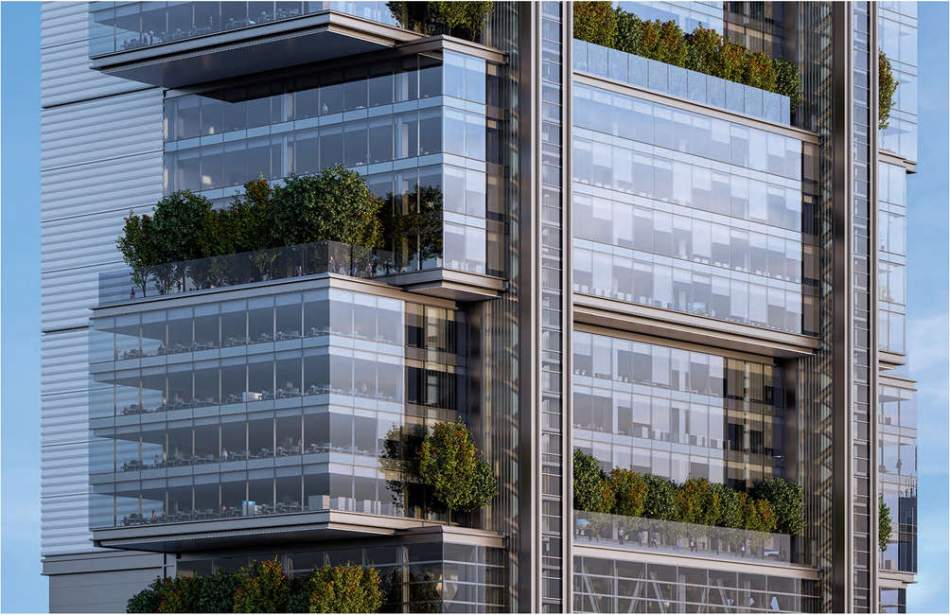 DBOX | Vorando | Foster + Partners
DBOX | Vorando | Foster + Partners
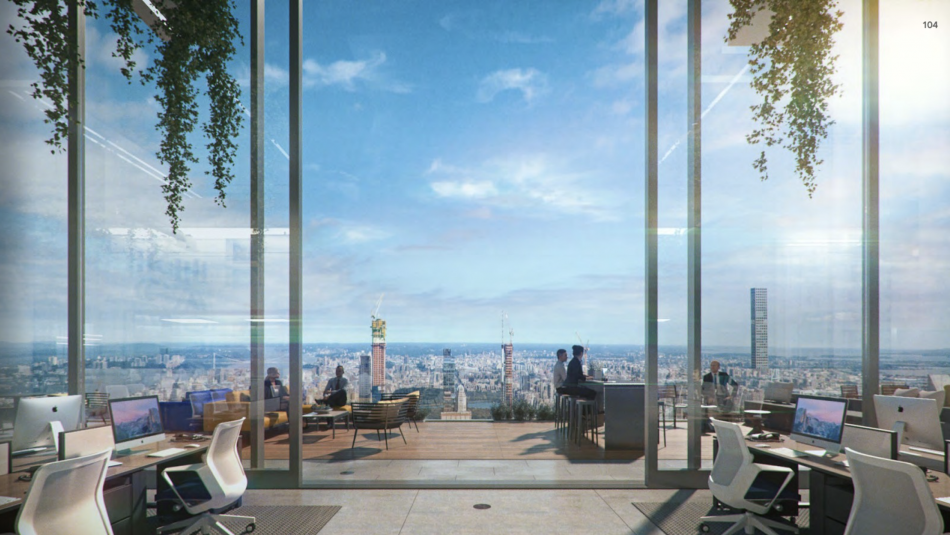 DBOX | Vorando | Foster + Partners
DBOX | Vorando | Foster + Partners
The feature Vornado seems most proud of is the 1,200-foot side core tower which allows for flexible space. Despite the flexible space, which is definitely a plus in our pandemic world, the building’s exterior looks very Amazon-eco-Helix inspired with a WeWork-ish interior. With Curbed’s recent revelations that planting buildings is debatable as a green solution (not able to come close to offsetting the eco-damage of building new) and the massive hit co-working spaces have suffered, it all feels a bit like what one would expect pre-COVID.
- Midtown (Urbanize NYC)





